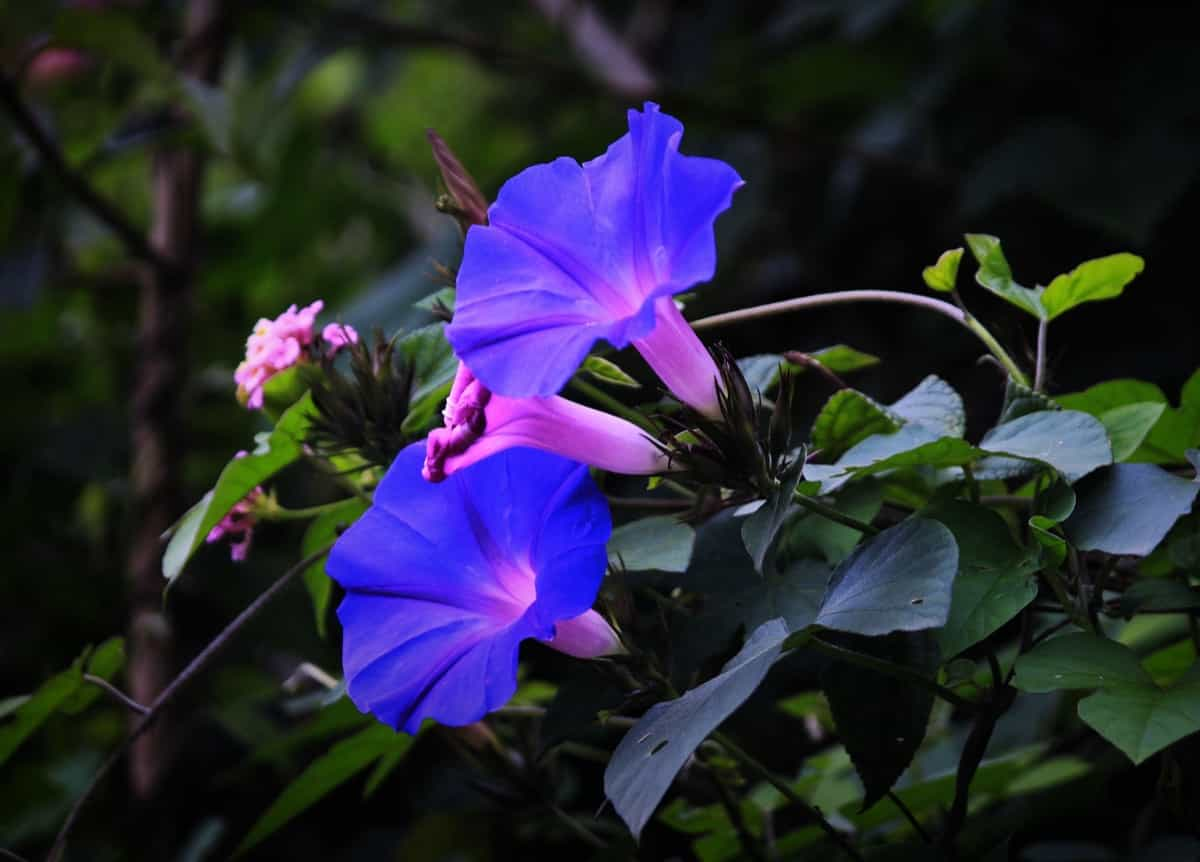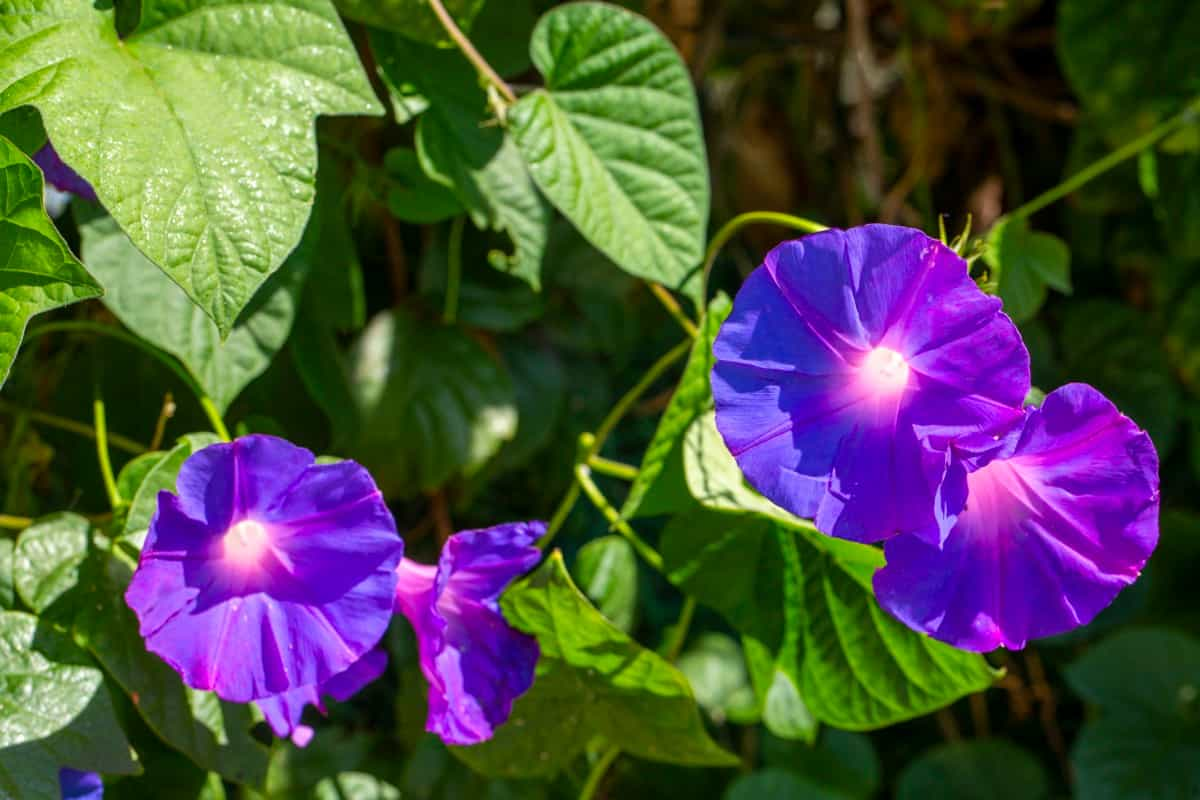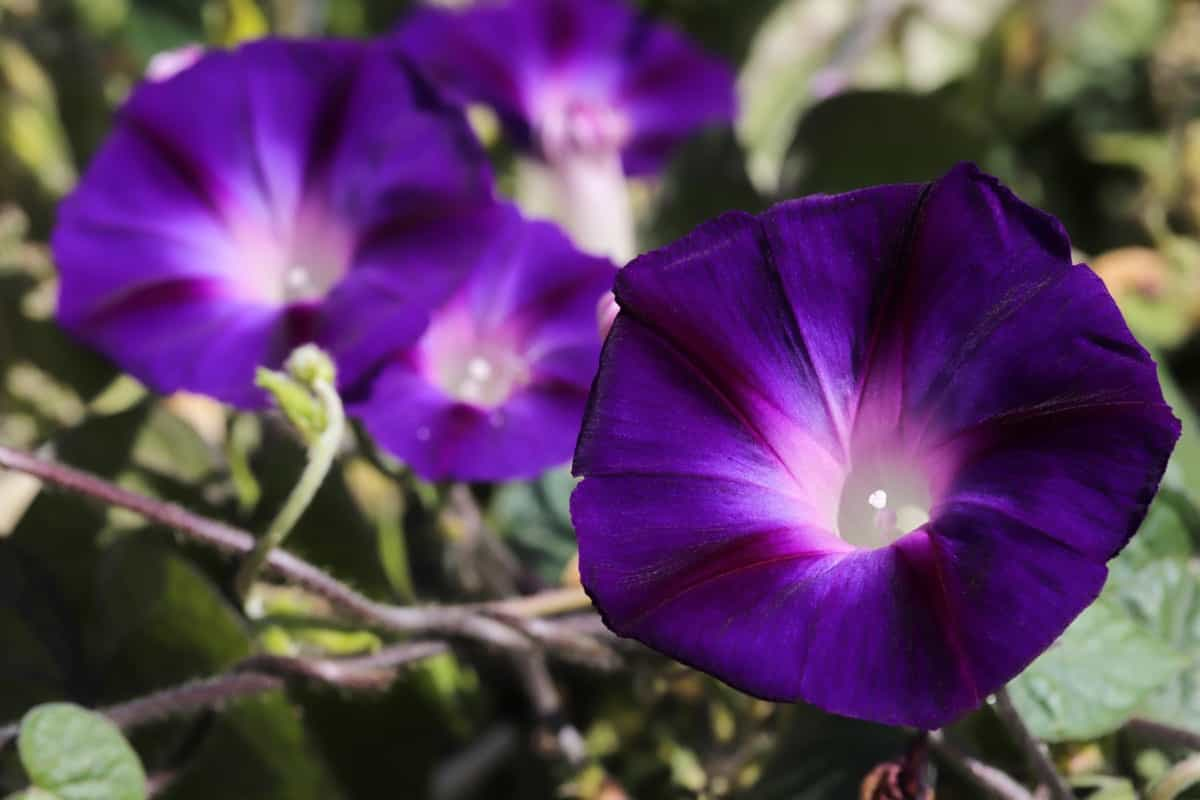Discovering leaf and flower-related issues with morning glories can be disheartening for gardening enthusiasts. However, with the right natural remedies and solutions, these problems can be effectively addressed. From managing yellow leaves to combating powdery mildew, explore practical tips to nurture vibrant morning glory plants and restore their beauty.

About Morning Glory Plant
Morning glories, scientifically known as Ipomoea, are fast-growing annual or perennial vines appreciated for their vibrant, trumpet-shaped flowers and heart-shaped leaves. These plants are available in a variety of colors, shades of blue, purple, pink, and white, and are often cultivated for their ornamental value in gardens and landscapes. Morning glories are known for their rapid growth and ability to climb and cover vertical structures with their lush foliage and blossoms.
Common Morning Glory Leaf and Flower-Related Problems
Morning glories, while generally easy to grow, can encounter several leaf and flower-related issues that may affect their health and appearance. Some of the most common problems include yellow leaves, leaf spots, rust on leaves, powdery mildew, aphid damage, spider mite infestation, botrytis blight, flower bud drop, petal discoloration, and leaf curling.
Yellow Leaves
Yellow leaves in morning glories can indicate various issues, including nutrient deficiencies, overwatering, or environmental stress. Addressing the causes, such as adjusting watering practices and providing balanced fertilization, can help alleviate the foliage’s yellowing.
Leaf Spots
Leaf spots, which appear as discolored or darkened areas on the foliage, can be caused by fungal or bacterial infections. Proper sanitation, including removing affected leaves and providing adequate air circulation, can help manage and prevent leaf spots in morning glories.
Rust on Leaves
Rust on leaves is a common problem caused by fungal infections, resulting in orange or reddish-brown bumps on the foliage. Managing rust on morning glories involves implementing proper watering practices, promoting good air circulation, and using fungicidal treatments when necessary.
In case you missed it: How to Fix Daisy Leaf and Flower Problems: Exploring Causes and Natural and Home Remedies

Powdery Mildew
Powdery mildew, characterized by a powdery white growth on the leaves and stems, is a fungal disease that can affect morning glories. Preventing powdery mildew involves:
- Maintaining proper air circulation.
- Avoiding overhead watering.
- Using fungicidal treatments as a part of integrated pest management.
Aphid Damage
Aphids, small sap-sucking insects, can damage morning glories’ foliage and buds. Implementing natural pest control methods, like introducing beneficial insects and using insecticidal soaps, can help manage aphid infestations and minimize damage to the plants.
Spider Mite Infestation
Spider mites, minuscule arachnids, can infest morning glories and cause stippling, webbing, and overall decline in plant health. Regularly monitoring and addressing spider mite infestations through proper watering, natural predators, or horticultural oils can help prevent extensive damage.
Botrytis Blight
Botrytis blight, also known as gray mold, is a fungal disease that can affect morning glories’ flowers and foliage, causing browning, wilting, and decay. Managing botrytis blight involves promoting good air circulation, avoiding overhead watering, and using fungicidal treatments when necessary.
Flower Bud Drop
Morning glories can suffer from premature flower bud drop due to environmental stress, nutrient imbalances, or pest infestations. Providing optimal growing conditions, including proper watering, fertilization, and pest control, can help prevent this.
Petal Discoloration
Environmental stress, nutrient deficiencies, or fungal infections can cause petal discoloration in morning glories. Proper care, including balanced fertilization and disease management, can help maintain the flowers’ vibrant coloration.
Leaf Curling
Leaf curling in morning glories can be a response to environmental stress, pest infestations, or nutrient deficiencies. Addressing the underlying causes, such as managing pests, providing optimal growing conditions, and ensuring proper nutrition, can help alleviate leaf curling issues.
In case you missed it: How to Control Blossom Midge in Plants: Effective Treatment for Flower Buds/Orchids

Tips for Morning Glory Leaf and Flower-Related Problems: Natural Remedies and Solutions
Proper Watering: Morning glories thrive in well-drained soil and require regular watering. However, overwatering can cause issues, including leaf spots and powdery mildew. If morning glory plants are showing signs of powdery mildew due to overwatering, reducing the frequency of watering and ensuring the soil has proper drainage can help alleviate the problem.
Soil Drainage: Ensuring proper soil drainage is crucial for preventing issues such as rust on leaves and botrytis blight. For instance, if rust is observed on morning glory leaves due to waterlogged soil, amending the soil with organic matter to improve drainage can aid in addressing the problem.
Fertilization: Balanced fertilization is essential for promoting healthy foliage and vibrant flowers. If morning glories exhibit yellow leaves due to nutrient deficiencies, applying a balanced fertilizer with a higher phosphorus content can help rectify the issue and encourage healthy growth.
Pest Management: Implementing natural pest control methods, such as introducing beneficial insects or using insecticidal soaps, can effectively manage pests like aphids and spider mites. For example, releasing ladybugs or lacewings in the garden can help control aphid populations and minimize damage to morning glory plants.
Disease Prevention: Proper air circulation around morning glories is crucial to preventing diseases like powdery mildew and botrytis blight. For instance, strategically pruning nearby plants to improve airflow can reduce the risk of fungal infections and promote overall plant health.
Mulching: Applying organic mulch around the base of morning glories can help conserve soil moisture and suppress weed growth. For example, a layer of straw or wood chips can create a favorable growing environment while reducing the risk of leaf spots caused by soil splashing onto the foliage.
Integrated Pest Management: Adopting an integrated approach to pest and disease management is essential for maintaining plant health. For instance, using physical barriers, such as row covers, to protect morning glory plants from pest infestations can be an effective component of integrated pest management.
Pruning: Pruning affected foliage, flowers, or buds is important for preventing the spread of diseases and pests. If morning glories exhibit petal discoloration due to fungal infections, promptly removing affected flowers and applying a fungicidal treatment can help mitigate the problem.
Monitoring: Regularly monitoring morning glories for signs of stress, pest infestations, or disease development is crucial for early detection and intervention. For example, inspecting the undersides of leaves for spider mite webbing and stippling can help identify infestations early on.
In case you missed it: Using Sevin Dust on Flowering Plants: Guide for How and When to Apply

Supportive Structures: Providing adequate support for the climbing vines of morning glories is essential for preventing damage to the plants. For instance, installing trellises or arbors to guide the growth of the vines can ensure proper development and minimize the risk of leaf curling due to physical stress.
Conclusion
By implementing natural remedies and proactive solutions such as proper watering, pest management, and disease prevention, gardeners can effectively address and overcome leaf and flower-related problems, fostering the health and vibrancy of their morning glory plants.
- Types of Fungicides Used in Agriculture
- Common Issues in the Fruit Development Stage of Pomegranate Farming
- Fruit Development Issues in Papaya: Easy Solutions and Treatment
- Soil-Borne Diseases and How to Protect Your Plants
- Practices to Prevent Disease Spread in the Garden
- From Wilted to Thriving: How to Treat Root Rot Naturally in Houseplants
- Natural Remedies to Cure Brown Spots on Fig Tree Leaves
- Natural Solutions for Poinsettia Problems: 100% Effective Remedies
- How to Control Calla Lily Problems: Natural Remedies for Leaf and Flower Problems